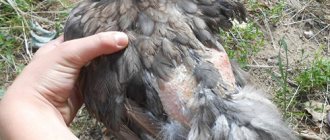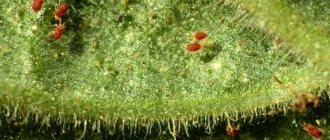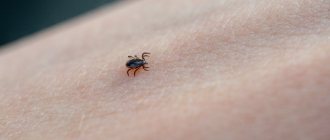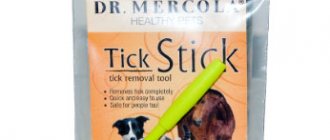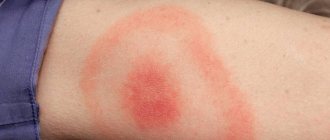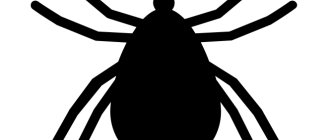Patients who become infected with Demodex mites may experience unpleasant symptoms. Sometimes this disease leads to serious complications.
When a mite penetrates the eye area, it leads to increased tearing, eyelash loss, and inflammation. This parasite multiplies in the sebaceous and meibomian glands, as well as in the hair follicles of the patient. Often a tick infection is asymptomatic, that is, it does not cause any discomfort to the host. However, the activity of the tick can increase when the functioning of human internal organs is disrupted, including the immune, nervous and endocrine systems.
The size of the Demodex mite varies from 0.16 to 0.48 mm. About 25 individuals can live in one hair follicle. In a quarter of cases of tick detection on the skin of the face, damage to the sebaceous glands and meimobian ducts occurs. A number of ophthalmological problems are also caused by infection with this parasite. Thus, it is one of the leading causes of blepharitis, chalazion, blepharoconjunctivitis, episcleritis, and keratitis.
About the Demodex mite
There are two species of these mites found on humans: Demodex folliculorum and Demodex brevis.
Demodex mites can also live on various types of animals, in particular on dogs, which also suffer from demodicosis. But a person cannot become infected from an animal, since those ticks belong to other species and cannot live on humans. Demodex mites are considered opportunistic. This means that they can live on the skin of a healthy person - their presence does not always lead to the development of the disease. Different studies indicate different prevalence of Demodex. In any case, at least 50% of people are carriers of these mites; some researchers put the figure at 97%. It is believed that among children and young people there are fewer carriers of Demodex mites, the number of carriers increases with age, and almost all older people are affected by this mite.
Demodex lives in the sebaceous glands and hair follicles, preferring the face to other parts of the body. Larger mites, Demodex folliculorum, most often target the hair follicles of the eyelashes and eyebrows. Demodex brevis prefers to settle in the sebaceous glands of the wings of the nose, nasolabial folds, and chin. However, mites can also be found on other areas of the skin, including the cheeks, neck, chest and back.
Demodex mites are not visible to the naked eye. An individual of Demodex folliculorum can reach a size of 0.5 mm; Demodex brevis is even smaller - no more than 0.15 mm. Demodex does not like light and is most active at night. The most comfortable temperature for it is 30-40 °C, so the tick becomes active in the spring and summer.
Methods of transmission of demodex
How to remove an eyelash from an eye
Eyelash mites are transmitted in different ways:
- going to the sauna and steam bath;
- using someone else's cosmetics and hygiene items: pastels, towels;
- undisinfected instruments in beauty salons;
- communication with a sick animal or person.
Important! Demodex shows increased activity in the autumn-spring period. Demodicosis is found in the nasolabial folds, on the chin, in the eyebrows, and ears.
Causes of demodicosis
In a healthy person, the activity of the Demodex mite is suppressed by the body's immune defense. With a decrease in immunity, there are more ticks, which leads to the development of demodicosis. Also, an increase in the number of mites can be caused by metabolic disorders. Demodex feeds mainly on the secretions of the sebaceous glands, so increased productivity of the sebaceous glands leads to the activation of mites and, as a consequence, manifestations of demodicosis.
Thus, the list of the main reasons for the development of demodicosis may look like this:
- decreased general immunity;
- stress factors (stress and negative emotions contribute to decreased immunity);
- chronic diseases leading to a decrease in the protective ability of the skin;
- increased skin oiliness;
- hormonal changes (in particular during adolescence, when as a result of such changes the viscosity of the secretion of the sebaceous glands increases);
- use of cosmetics with hormonal supplements;
- failure to comply with personal hygiene rules.
Folk remedies
Remember that folk remedies are not the main treatment and cannot replace medications; they can act as auxiliaries in general therapy prescribed by a doctor.
Among the most popular and effective recipes:
- Oak bark. An infusion is prepared from it, which helps relieve swelling, reduce inflammation and get rid of itching. To prepare, you need to take 1 teaspoon of bark and pour 1 glass of boiling water, let it brew well, and strain through cheesecloth before use.
- Linden flowers. It also has a beneficial effect on the condition of the skin. A decoction is prepared from the color; you need to take 2 tablespoons of the color and pour a glass of boiling water, bring to a boil over low heat and stir for 3 minutes. Next, strain the broth through cheesecloth. Use as a compress, moisten cotton pads and apply for 10 minutes.
- Sagebrush. This herb is used for tincture, which is taken orally. You need to take 3 teaspoons of the herb and pour three liters of boiling water, leave for 3 hours. Then apply 50 ml.
Important!
Before using traditional recipes, you should consult a doctor so as not to aggravate the condition and harm your health.
The use of folk remedies has a positive effect on the human condition. Their regular and correct use will quickly eliminate demodicosis.
Symptoms of demodicosis
Mites destroy the cells of the follicle walls and sebaceous glands. This leads to the appearance of keratinization, foci of inflammation, and pigmentation. Demodex migrates across the skin, exploring new areas; Thus, with increasing demodicosis, the signs of damage spread over an increasingly larger area. It is also assumed that mites cause sensitization of the body, that is, an allergic reaction is added to mechanical damage.
The main symptoms of demodicosis are:
Acne (acne)
Juvenile acne in most cases is a manifestation of demodicosis.
Skin redness
Redness may be accompanied by swelling of the skin.
Itching
Itching with demodicosis usually intensifies at night, when mite activity increases.
More about the symptom
Skin changes
Progressive demodicosis leads to changes in the skin: roughening, peeling, and the appearance of thickenings similar to scars. In the advanced stage, the skin takes on an earthy color.
Blepharitis
When Demodex affects the eyelashes, signs of blepharitis (inflammation of the ciliary edge of the eyelids) develop: the eyelids begin to itch, turn red, swell, and may stick together. The eyes water, inflammation spreads to the conjunctiva - conjunctivitis develops. Loss of eyelashes is observed.
Use of medications
Remember that you can use medications prescribed by your doctor; it is also important to follow medication regimens and adhere to dosages. Most often, therapy includes taking drugs such as Trichopolum, which is an antibiotic, the action is aimed at destroying parasites and harmful microbes.
To get rid of unbearable itching, as well as relieve inflammation, the medicine calcium pangamat is prescribed. For external use, use Streptocide, which is rubbed into the affected areas of the skin. Doxycycline is quite effective in helping to get rid of eyelash parasites. Vitamin complexes are used to restore the body's protective functions.
You should use ointments that allow you to get rid of symptoms and at the same time eliminate the cause of demodicosis. Most often, doctors prescribe ichthyol ointment, amitrazine, benzyl benzoate, yam. Kang, rozamet, and sinshen creams have a fairly good therapeutic effect. The gels pilocarpine, blepharogel, and metrogil are no less effective.
Therapy also includes taking eye drops, for example, Torbex, carbachol, levomecithin, phosphacol. Remember that the use of drugs is only possible as prescribed by a doctor.
Methods for diagnosing demodicosis
The symptoms of demodicosis coincide with the symptoms of some other diseases (dermatitis, allergies). Acne with demodicosis is similar to the manifestations of rosacea (rosacea disease). Therefore, laboratory diagnostics are necessary to confirm the diagnosis.
Demodex analysis
The material for analysis is a scraping from the skin. If the eyelids are affected, eyelashes are taken for analysis. Next, a microscopic examination is carried out, which is designed to detect tick individuals or eggs.
More information about the diagnostic method
Sign up for diagnostics To accurately diagnose the disease, make an appointment with specialists from the Family Doctor network.
Prevention and possible consequences
Demodicosis in humans provokes purulent inflammation of the skin, hair follicles, and conjunctiva of the eyes. In the absence of adequate treatment, mites on the eyelashes penetrate deep into the soft tissues, causing acne. Experts have proven that the causative agent of demodicosis plays a significant role in the occurrence of such diseases:
- chronic blepharitis;
- blepharoconjunctivitis;
- microabscesses.
As the disease progresses, ulcers form under the eyes, causing swelling of the surface and inner layers of the skin. Over time, the mucous membrane of the eye becomes involved in the process. If you do not contact a specialist in a timely manner, vision problems may arise.
To prevent reactivation of the microscopic mite, the following preventive measures must be observed:
- disinfection of glasses and razors;
- regular change of pillowcases;
- ironing towels;
- disposal of cosmetics infected with mites.
Using tar soap instead of foam for washing reduces the likelihood of relapse of demodectic blepharitis. Periodic use of antiseptic eye drops also prevents the mite from penetrating the meibomian glands.
Treatment methods for demodicosis
Treatment of demodicosis is a long process. On average it takes 4-6 weeks, but in some cases it may take several months.
The difficulty of treating demodicosis, in particular, is that the most effective anti-mite remedies are quite toxic. Therefore, means for the treatment of demodicosis are selected individually, depending on the degree of damage and the patient’s condition.
Treatment must be comprehensive. The course of treatment includes both local and systemic therapy.
Local therapy
Local therapy for demodicosis is aimed at suppressing the activity of the mite. Without the use of local therapy, treatment success cannot be expected.
Systemic therapy
Systemic therapy for demodicosis involves measures to strengthen the immune system and normalize metabolism.
Make an appointment Do not self-medicate. Contact our specialists who will correctly diagnose and prescribe treatment.
Rate how useful the material was
thank you for rating
Complications
If the patient delays going to the doctor or ignores the use of medications, complications will arise:
- loss of sensation in the eyelids;
- inflammation and spread of the inflammatory process to the structure of the eyeballs;
- formation of abscesses with purulent infiltrate.
To avoid complications, you must fully adhere to your doctor's recommendations. Self-medication is unacceptable; it will lead to a worsening of the patient's condition.

